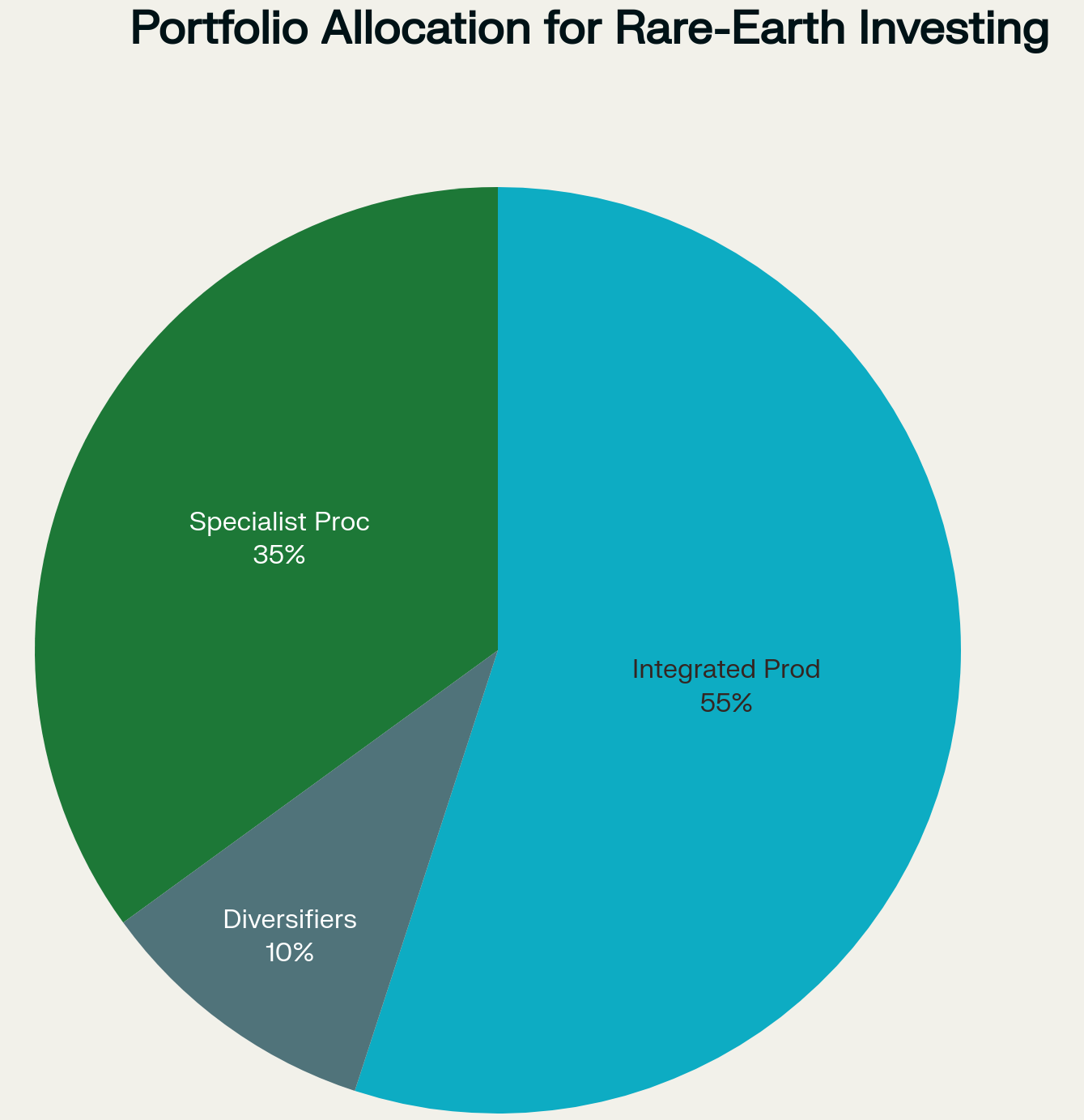China just turned rare-earths into a geopolitical weapon, yet savvy investors know the real profits lie in non-China producers and processors.
Beijing dropped new export controls on rare-earth materials this Thursday, a calculated strike timed weeks before President Trump and Xi Jinping meet in South Korea. Foreign companies now need Beijing’s stamp of approval before exporting magnets with even trace amounts of Chinese-sourced rare earths or technology.
The rules give Beijing its own version of Washington’s foreign-direct-product rule, the tool the U.S. has wielded to cut off China’s semiconductor access. China controls roughly 70% of global rare-earth mining, 90% of separation and processing, and 93% of magnet manufacturing. That dominance puts Beijing in command of supply chains running through smartphones, electric vehicles, and fighter jets.
Investors saw opportunity fast. State-owned surged 10% in Shanghai on the news. Rising Nonferrous Metals jumped more than 6%. The Chinese stock rally matters less than the bigger picture: building supply chains outside China just became urgent, and certain companies are positioned to capture billions in that transition.
The Strategic Backdrop
This policy shift doubles as negotiation leverage ahead of Washington talks. Rare-earth shortages have already hit U.S. auto supply chains and triggered multiple rounds of tense discussions. Beijing tightened access to materials that defense contractors and tech manufacturers depend on, a reminder that Chinese processing capabilities still dominate global supply.
The commerce ministry called the controls necessary to “protect national security” and stop “misuse of rare earth materials in military sectors.” Read between the lines: China views rare earths as geopolitical ammunition and plans to use it.
U.S. and allied companies got the message. Processing that depends on Chinese facilities creates strategic vulnerability no one wants. Billions in government funding and private capital are now flowing toward domestic rare-earth projects.
Where the Investment Opportunity Lies
Vertically integrated producers will win this supply chain scramble. The companies that control mining and downstream processing, delivering separated rare-earth oxides without Chinese facilities, will command premium valuations as customers hunt for secure supply.
stands at the top of that list. The only large-scale rare-earth mine in the U.S., MP owns the Mountain Pass facility in California and has moved beyond shipping mixed concentrate to producing separated oxides domestically. Backed by Pentagon funding and positioned to supply both civilian and defense customers, MP embodies the vertically integrated model Washington is trying to replicate across the critical minerals sector.
offers similar integration. While its Mt. Weld mine sits in Australia, Lynas is building a U.S. separation plant in Texas expected to process 10,000 tons annually by 2026. End-to-end control from Australian ore to Texas processing shields the company from Chinese bottlenecks and puts it in position for U.S. defense contracts.
Beyond the miners, pure-play processing companies stand to benefit as the G7 and Washington push to build non-China supply chains. American Battery Technology Company (OTCQB: ABML) is developing hydrometallurgical separation techniques for rare earths and battery metals, targeting both primary production and recycling feedstock. is advancing its Round Top project in West Texas, which hosts both heavy and light rare earths plus lithium, with planned on-site separation facilities and military offtake agreements.
The Risks Worth Watching
China’s enforcement timeline remains unclear. Beijing may phase in restrictions gradually, approving civilian use while blocking military-related shipments. That ambiguity creates uncertainty for companies navigating the new licensing requirements.
Permitting delays represents another headwind. U.S. federal funding comes with environmental and community review requirements that can stretch project timelines. A backlog of separation facility permits could delay production just as market windows open.
Price volatility is the third concern. A sudden shortage of Chinese magnets might spike spot prices in the near term, but long-term metal prices could soften as new U.S. projects reach production. Investors need to time their entry carefully and avoid chasing momentum at cycle peaks.
How to Position Your Portfolio
A balanced approach to rare-earth exposure might allocate 50% to 60% to established integrated producers like MP Materials and Lynas. These companies offer the safest path to participate in supply-chain reshoring, with existing production and government backing.
Another 30% to 40% could go to specialist processors like American Battery Technology and Texas Mineral Resources. These names carry higher technical risk but offer pure-play exposure to downstream value capture as separation capacity comes online.
The remaining 10% to 20% belongs in diversifiers: royalty vehicles like that provide non-operating exposure to rare-earth projects without direct capital expenditure risk.

Recommended portfolio allocation: 55% to integrated producers (e.g., MP Materials and Lynas), 35% to specialist processors (e.g., American Battery Technology and Texas Mineral Resources), and 10% to diversifiers (e.g., Wheaton Precious Metals).
The Bottom Line
China’s export controls prove rare earths have become geopolitical tools beyond their industrial use. Building alternative supply chains will take decades, driven by national security concerns rather than temporary trade friction.
The companies that control the entire value chain, from mine to magnet, will capture the lion’s share of that shift. For investors willing to navigate near-term volatility and permitting uncertainty, the opportunity is clear. As Washington and its allies commit tens of billions to reshoring critical minerals, the rare-earth sector offers one of the few ways to directly invest in the reshaping of global industrial policy.
Non-China rare-earth supply chains will get built. The money flows to whoever builds them first.